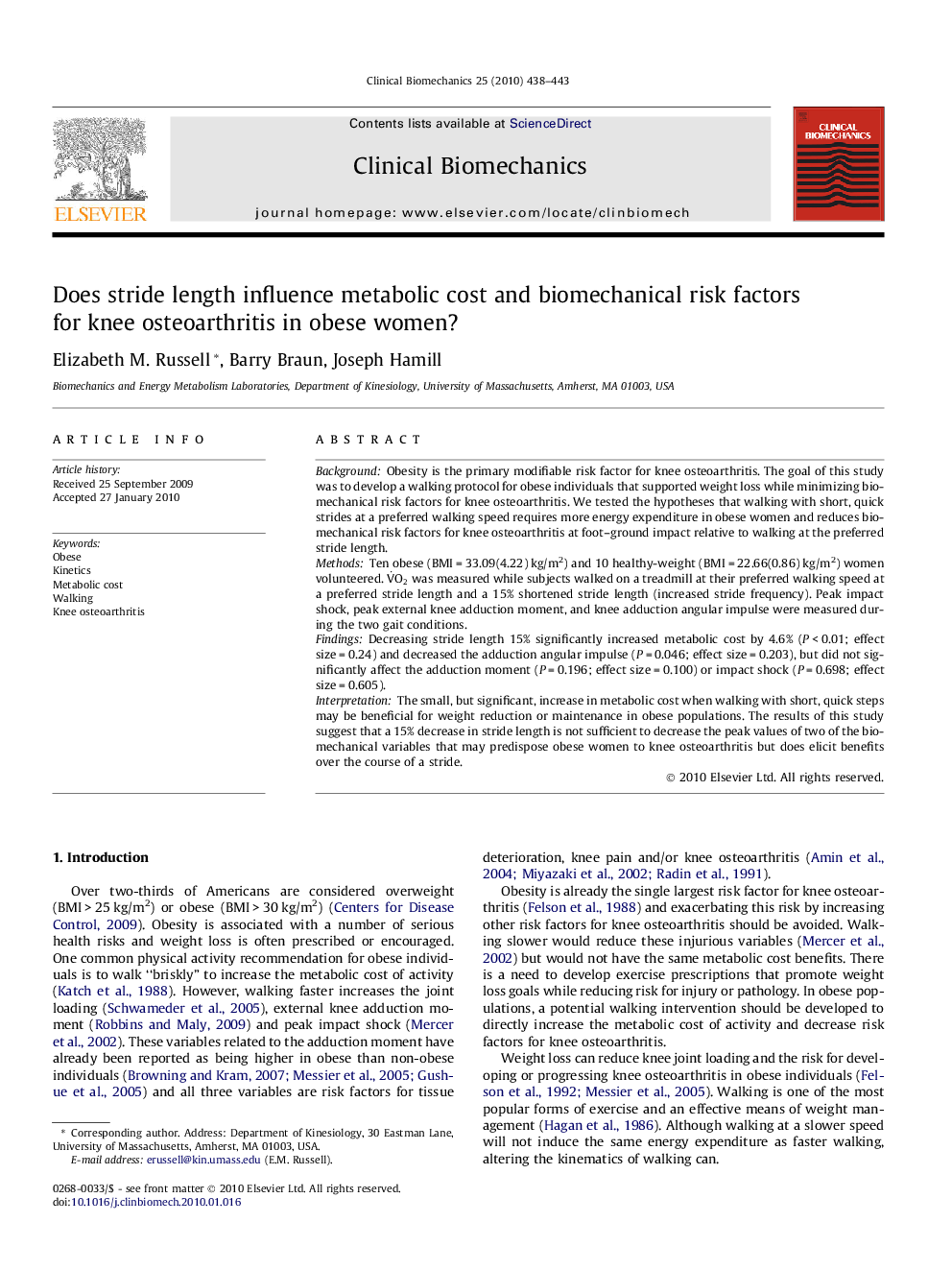| Article ID | Journal | Published Year | Pages | File Type |
|---|---|---|---|---|
| 4051044 | Clinical Biomechanics | 2010 | 6 Pages |
BackgroundObesity is the primary modifiable risk factor for knee osteoarthritis. The goal of this study was to develop a walking protocol for obese individuals that supported weight loss while minimizing biomechanical risk factors for knee osteoarthritis. We tested the hypotheses that walking with short, quick strides at a preferred walking speed requires more energy expenditure in obese women and reduces biomechanical risk factors for knee osteoarthritis at foot–ground impact relative to walking at the preferred stride length.MethodsTen obese (BMI = 33.09(4.22) kg/m2) and 10 healthy-weight (BMI = 22.66(0.86) kg/m2) women volunteered. V˙O2 was measured while subjects walked on a treadmill at their preferred walking speed at a preferred stride length and a 15% shortened stride length (increased stride frequency). Peak impact shock, peak external knee adduction moment, and knee adduction angular impulse were measured during the two gait conditions.FindingsDecreasing stride length 15% significantly increased metabolic cost by 4.6% (P < 0.01; effect size = 0.24) and decreased the adduction angular impulse (P = 0.046; effect size = 0.203), but did not significantly affect the adduction moment (P = 0.196; effect size = 0.100) or impact shock (P = 0.698; effect size = 0.605).InterpretationThe small, but significant, increase in metabolic cost when walking with short, quick steps may be beneficial for weight reduction or maintenance in obese populations. The results of this study suggest that a 15% decrease in stride length is not sufficient to decrease the peak values of two of the biomechanical variables that may predispose obese women to knee osteoarthritis but does elicit benefits over the course of a stride.
